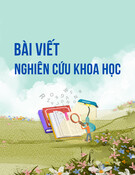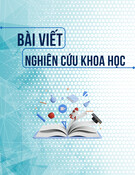
Tạp chí Khoa học Ngôn ngữ và Văn hóa
ISSN 2525-2674
Tập 7, số 3, 2023
274
LEARNING ENGLISH LITERATURE: PERSPECTIVES
OF VIETNAMESE UNIVERSITY STUDENTS AND TEACHERS
Ho My Tran; Thai Thi Phuong Hang; Vo Hoang Yen; Nguyen Phuong Thao;
Bui Minh Thu; Le Cong Tuan
Can Tho University
lctuan@ctu.edu.vn
(Received: 20/09/2023; Revised: 15/11/2023; Accepted: 09/12/2023)
Abstract: This study investigated the perception of students of English at Can Tho University
(CTU) in learning literature in English. The study also sought teachers’ opinions and
recommendations for more effective literary learning. Seventy-nine students and two teachers
teaching literature were invited to participate in the study. The students were asked to
complete a questionnaire survey while the two teachers were interviewed. The results from
the questionnaire and the interviews revealed that while the students recognized the
importance of literature in their studies, they had low motivation and faced a number of
challenges. The difficuties included a lack of literary knowledge and experience, literary
terminology, and linguistic competence for the subject. Additionally, the teachers’
suggestions focused on two major measures, namely, (1) encouraging a habit of extensive
reading and (2) creating opportunities for students to express opinions and get engaged in
discussions about literature.
Keywords: Challenges; English-American literature; learner perception; literature courses;
teacher recommendations
1. Introduction
Literature is an indispensable component in the curriculum for language studies in
universities. It is literary acquisition and literary competence that demonstrate learners’ deep
understanding and mastery of a language. Languages are different and so the literary works
attached to particular languages are also different in several aspects. These differences often
generate obstacles in the learning process of a foreign language learner. In turn, the difficulties
may entail low motivation and negative attitudes towards literature courses among students. In
reality, issues related to literary study were not sufficiently attended. A review of the literature
showed that only a limited number of studies were conducted to obtain insights about the teaching
and learning of literature in a foreign language. Furthermore, most studies approached the issues
from the perspective of the teacher and mainly done in the Arabian contexts. This left us with
many questions unanswered about how students themselves viewed their literary learning and
what challenges they conceived as important and in need of solutions.
This study, therefore, aims at gaining more understanding about how students of English
majors at Can Tho University perceived the role of literature courses in their programs.
Specifically, this research had the following objectives. First, it investigated the students’
perceptions about the literature courses, regarding their attitudes, motivation, and challenges in
learning. Also, it aimed to seek answers to address the issues involved in the literature courses for
English majors at Can Tho University in Vietnam.

Tạp chí Khoa học Ngôn ngữ và Văn hóa
ISSN 2525-2674
Tập 7, số 3, 2023
275
2. Literature review
2.1 The Significance of Literature Courses
English literature is one of the core subjects for students majoring in the English language
studies. Do Thi Quy (2002), Tran Thanh Du (2022), Nguyen and Thai (2022) argue that literary
knowledge is an inevitable part of the study of a language. What literature courses bring about is
learners’ development both aesthetically and linguistically, as well as a number of other skills.
Through the courses in literature, students learn to sense and appreciate the beauty of literary
works and their content, and understand cultural values. Kaya (2018) and Baba (2022) summarize
a number of authors’ opinions (e.g. Lazar, 1993a; Parkinson & Thomas, 2000; McKay, 1982)
about the benefits that literature study brings to students. Generally, literature is believed to
provide authentic language input, enrich cultural knowledge, develop personal involvement,
motivate students, and maintain critical thinking.
In second language reading, the use of authentic materials is encouraged. In this respect,
literary works are highly satisfying for their level of authenticity. Unlike texts adapted for learning
purposes found in course books, literary works are produced to serve the realistic needs of
communication between the authors and the readers. Literature is termed as “genuine and
undistorted” texts (Collie & Slater, 1987, p. 6). By using unmodified, unabridged texts, learners
are more likely to focus on meaning and absorb content, rather than consciously learn linguistic
details.
In terms of raising students’ cultural awareness and cross-culture understanding,
literature appears to be an effective tool. It is considered as one of the best means to achieve this
cultural target (Bobkina & Domingues, 2014). One cannot imagine a piece of literature that is
completely free of any socio-cultural elements. Thus, with literature, learners are exposed to
paramount cultural values and traditions, and this allows them to make comparison with and
reflect on their own culture. All this may result in students widening and justifying their view of
the world.
As for language development, literary works empower learners to a larger extent in
comparison to other means. With literary texts, students can attain various linguistic aspects at
different levels (Haniya, 2019). Linguistic benefits include increasing lexical and syntactical
ranges, constructing meaning at textual and discourse levels, understanding figurative and
stylistic language, etc. At the same time, students can practice with reading skills from the basics
such as skimming, scanning, guessing meaning from context to advanced skills such as reading
between the lines, making inferences, recognizing the writer’s intention, and so on.
Finally, literature is seen to be motivating, engaging, and developing critical thinking and
high order thinking skills for learners (Baba, 2022). The various themes, characters, and plots
found in literary masterpieces, on the one hand, catch students’ interest because they are realistic,
familiar, and relevant to students’ daily lives. On the other hand, alien, exotic and peculiar themes
and characters in the case of fiction for example, may appeal to students a curiosity to read and to
explore. It could be said that the aesthetic nature of literature per se is already attractive to most
audiences. Furthermore, the analyzing and interpreting of literary works requires students to
practice higher order thinking, be critical, and collaborative in group discussions, which in turn
results in more rounded learners.

Tạp chí Khoa học Ngôn ngữ và Văn hóa
ISSN 2525-2674
Tập 7, số 3, 2023
276
2.2 Five Approaches to Literature Instruction
Literary instruction has been implemented in two basic modes. Literature can be either
taught in separate stand-alone courses in specialization programs, or embedded in the general
language curriculum for non-majored students. According to Jabeen and Sarifa (2022), there are
five approaches to learning literature.
The most traditional is the teacher-centered approach, in which the teacher is someone
literally prolific who transmits knowledge to students. This approach also reflects the realities in
the educational contexts where tests and examinations are the focus. Common methods of
instructions include mainly the teacher lecturing, explaining, and demonstrating. Students are
passive receivers of knowledge, not motivated and frequently experience boredom (Jabeen &
Sarifa, 2022).
The second approach is known as the stylistic approach. According to Lazar (1993b), this
approach involves careful selection of materials for the literary courses. Stylistic Approach is
characterized by an encouragement to develop learners’ deep understanding of the literary texts
and at the same time build up their confidence through exchanging opinions in discussions.
The third approach is the learner-centered approach advocated by Maley (2012). Learner-
centeredness underpinned in the approach is realized in that it aims to develop students’ critical
thinking and a holistic growth for individuals. The approach also encourages personal creativity,
imagination, and emotional response from the part of students. Maley (2012) argues that this
approach does not pose literature to a threat of losing values, but on the contrary, learner
centeredness facilitates students’ critical understanding which is essential in a complex and ever-
changing world.
The paraphrastic approach refers to a curriculum that employs translated or abridged
versions of literary works. It is argued that such an approach is beneficial for learners with low
levels of language proficiency. However, the major limitation of the approach is concerned with
the students’ little or no authentic exposure to literary terms, imagery, and concepts (Jabeen &
Sarifa, 2022).
The fifth approach is the culture-based approach (Jabeen & Sarifa, 2022). This widely
adopted approach is based on the cultural information attached to the target language. It places
emphasis on the historical and cultural values and traditions associated with particular works.
This approach is valued by most researchers and educators because culture is an inseparable
component from literary and language acquisition.
In practice, literary curricula do not strictly follow a single approach, but rather a
combination of them instead. For instance, a combination of culture- and genre-based approaches
could be appropriate for literature courses at university level.
2.3 Challenges in Studying Literature
Insufficient Linguistic Preparedness
In studying literature courses, students face a variety of challenges. A great number of
these difficulties are due to limited language abilities and skills (McKay,1982). Not all students
have sufficient lexical and syntactic knowledge to understand literary texts. When there is a

Tạp chí Khoa học Ngôn ngữ và Văn hóa
ISSN 2525-2674
Tập 7, số 3, 2023
277
discrepancy between students’ current language knowledge and the texts’ complexity level, this
issue becomes more critical (Krishnasamay, 2015; Violetta-Irene; 2015). Besides, because
literary courses require reading extensively, poor reading skills could also be attributed to the
challenges.
Difficulties connected to literary texts
Abundance of literary language plus text length. In addition to high linguistic
requirements, the literary texts themselves are also the sources of problems for learners. In
literature, texts are normally lengthy and contain abundant language elements that are “too
difficult and complicated” (Sivapalan & Subramaniam, 2008, p. 56). Literary texts are packed
with figures of speech that the learner should be aware of. They are simile, metaphor,
personification, hyperbole, pun, synecdoche, tautology, oxymoron, alliteration, assonance,
onomatopoeia, refrain, and so on (Alkadi & Hezam, 2021, p. 4).
Unfamiliar cultural elements. Problems may arise when students read literary texts that
are culturally distant from theirs (Al-mahrooqui, 2012). It is not simple to understand the cultural
aspects tied to idioms, proverbs, slangs, colloquial language, and dialects found in literature. A
lack of cultural awareness and background knowledge on the learner’s part and even the teacher’s
side could obviously pose comprehension problems.
Low motivation and negative attitude
Linguistic and cultural barriers that hinder students’ understanding of literature can result
in another challenge: low motivation and negative attitudes. Novianti (2016) points out that
students may only learn literature for the sake of literature only and with a doubt that this learning
has little relevance to their prospects such as getting a job or interacting with other English users
at work or in business.
Teaching methods and material selection
Researchers draw attention to improper choice of delivery methods as well as content
selection in literature courses. McKay (1982) notices that any chosen literary texts must be
relevant to students’ needs, levels, and interests. Contrary to the proponents’ support for linguistic
benefits of literature, Robson (1989) argues that with syntactic and lexical complexity, literature
does ‘‘little or nothing to help students to become competent users of the target language’’ (p.
25). He maintains that literary works were not meant for linguistic practices. Consequently,
inadequacies are unavoidable.
The choice of genres to include in the courses also matters. Studies indicate an existence
of large differences in students’ preference and identification of genres that fit their learning styles
(Akyel & Yalçın, 1990; Hirvela & Boyle, 1988; Yılmaz, 2011). Learners in these studies show a
favor of novels and dramas over poetry, and this leads to a suggestion that prose should be
introduced prior to poetry.
As for teaching methods, any approach with heavy content and exam-oriented is seen as
not proper. Ujjwala (2013) claims that in most contexts, teachers employ the “traditional method
of lecturing on topics like theme, characterization, plot, motifs directly without giving any
emphasis on the linguistic/stylistic aspect of the literary text they teach” (p. 1). In a similar vein,

Tạp chí Khoa học Ngôn ngữ và Văn hóa
ISSN 2525-2674
Tập 7, số 3, 2023
278
Haniya (2019) states that realities revealed a “mismatch between literature as a content-based
subject and literature as a rich authentic material used in language classes” (p. 2).
2.4 Related studies
A substantial body of research in different aspects of literary programs has been
conducted. This line of research results in various findings and conclusions. In general, many
researchers have shown a consensus on the difficulties of the literary works, the mismatch
between students’ language proficiency and the requirement for literary understanding, and other
curriculum-related issues.
In the context of Turkey, Ogeyik (2007) found that learners held positive attitudes about
literary learning, because it benefited them in terms of cultural, linguistic, and personal
development. In the Japanese context, Fogal (2010) found similar positive attitudes among
university students. They enjoyed comfort with literary analysis, and acknowledged its role in
accommodating their language development and personal involvement. In the Malaysian high
school context, students preferred the literary types of mysteries, adventures, and life experiences
(Ghazali et al., 2009). This highlighted the importance of carefully selecting materials to meet the
needs and interests of the learners.
In Vietnam, there has been a scarcity of research on English literature related issues. Our
little understanding is only based on the three papers we found so far: studies by Do Thi Quy
(2002), Tran Thanh Du (2022), and Nguyen Thai Hoai Sang and Thai Cong Dan (2022).
Do Thi Quy (2002) investigated the difficulties the school students experienced with
literature programs. The reported challenges included students’ low English proficiency, limited
cultural knowledge, language barriers, and stylistic devices that hinder their comprehension of
literary works. The study also found that instructional methods played an important role in
motivating students to learn. The author recommended a number of useful techniques to employ
in literary classes, namely project-based learning, inquiry-based learning, playing games, role-
playing, group discussions, movie time, and think-pair-share classroom activities. It is worth
noting that this study was done with Vietnamese learners of English, but the participants were
students in a school in Canada, where English is a second language, a context incompatible with
Vietnam.
In his investigation of some problems of learning and teaching literature in the English
language curricula in Vietnam, Tran Thanh Du (2022) involved 150 students and 10 lecturers
across five universities. Focusing on the content of the curricula and students’ perception of the
challenges, the study identified the key sources of the problems, including limited experience of
mother tongue literature, limited experience with literary language, limited experience with
British and American literature, and limited experience and knowledge of the world, life, and
people. Teaching methodologies and possible solutions were not touched upon in this research.
Nguyen Thai Hoai Sang and Thai Cong Dan (2022) investigated students’ evaluation of
their experiences with seven classroom activities for learning literature. Students’ reported
varying levels of effectiveness corresponding to these activities. This showed a meaningful
initiation and creativeness on the teacher’s part in motivating students in the literary courses. The
task-based activities as named by the authors included (1) making films, (2) making portfolios,

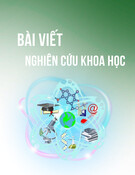



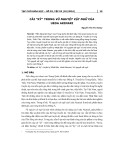


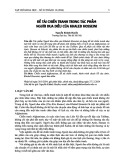
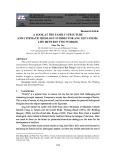
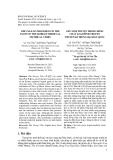
![Bộ câu hỏi trắc nghiệm Văn bản tiếng Việt [chuẩn nhất]](https://cdn.tailieu.vn/images/document/thumbnail/2025/20251127/thuynhung051106@gmail.com/135x160/24021764296609.jpg)
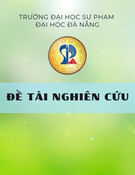

![Bài giảng Ngôn ngữ học đối chiếu Nguyễn Ngọc Chinh [PDF]](https://cdn.tailieu.vn/images/document/thumbnail/2025/20251101/vovu03/135x160/7471762139652.jpg)
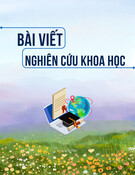
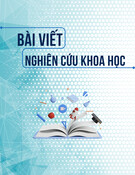
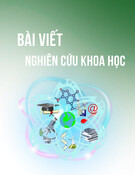
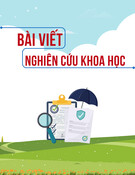
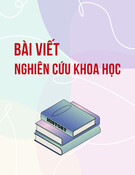
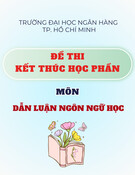
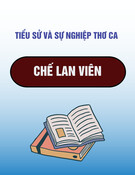
![Ngân hàng câu hỏi môn Tiếng Việt thực hành [chuẩn nhất]](https://cdn.tailieu.vn/images/document/thumbnail/2025/20251003/kimphuong1001/135x160/21861759464951.jpg)
![Bài giảng Văn học phương Tây và Mỹ Latinh [Tập hợp]](https://cdn.tailieu.vn/images/document/thumbnail/2025/20251003/kimphuong1001/135x160/31341759476045.jpg)
